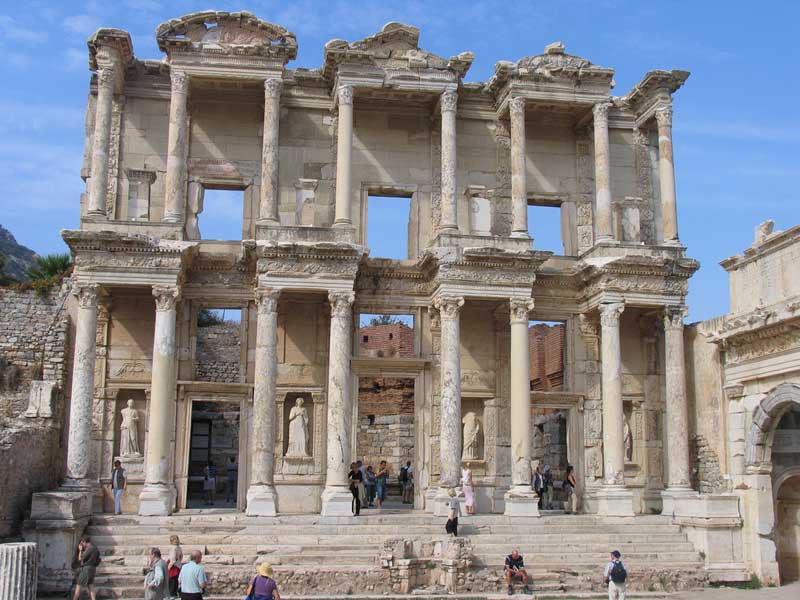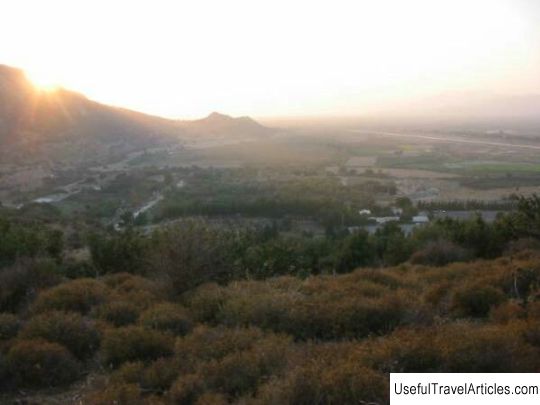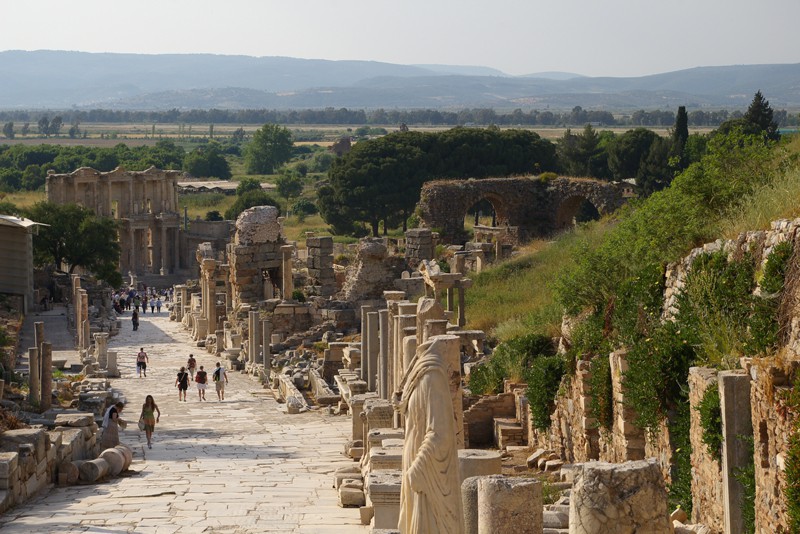Information about Ephesus in Turkey
Rating: 7,9/10 (146 votes)  AttractionsEphesus is an open-air museum and incredibly popular attraction. Many myths and legends of Ancient Greece date back to the history of this city. One of the legends tells how Ephesus was founded. According to its text, the Delphic oracle commissioned the son of the ruler of Athens, Androcles, to build a new city. However, he did not indicate its exact location, but said to wait for clues from fire, fish and wild boar. During his search, Androcles looked after a beautiful bay. When he landed on its shore, he found local fishermen who were grilling fish. Suddenly a spark that flew out of the fire ignited a bush, and a wild boar jumped out of it in fright. Having discovered what was destined, Androcles founded a city, the symbol of which was the wild boar. The city got its name from one of the warlike Amazons, which Androcles had to meet. He fell in love with Ephesia and named a settlement after her. By the way, the name Ephesia is translated as “desired”. Once in these places Homer himself composed his great works, now Ephesus is a vast archaeological complex, reverently restored by scientists and archaeologists. The first excavations here were carried out in 1869 by English historians. Since then, this delightful piece of the ancient world has become available to the whole world. You can enter the city-museum from two sides. The most convenient way to explore Ephesus is walking along the road that descends from top to bottom. In the upper part of Ephesus there are the ancient walls of the Varius baths. Here you can try to study the ancient water supply system, which, as you know, worked perfectly, which still surprises modern people. Near the baths are the remains of ceramic pipes and the Caldarium - the place where hot water was delivered.  Nearby is the Agora - a square that served as a gathering place for people to hold meetings. Here you can also see the basilica with its impressive 165 meter long colonnade. According to historians, in this place the inhabitants of the city conducted commercial affairs. From the back side of the basilica, the eyes of tourists appear small theater Odeon. Entering the theater, one can imagine how 1500 spectators were once placed on 22 rows of its granite steps. From the height of the tribune, the Varius baths, the basilica, and the municipality of Pritaneon, which hosted the sessions of the Ephesus Parliament. As a result of the excavations of Pritaneon, scientists have found beautiful slabs, columns, a hearth of sacred fire and a sculpture of the goddess Diana. The found sculptures of Artemis are now on display in the Ephesus Museum. From the municipality, you can walk to the Temple of Domitian and the Mausoleum of Memmius. There was a city pharmacy in Domityan's temple. The Mausoleum of Memmius is of interest because of the surviving relief drawings. It is not difficult to imagine all the greatness of Ephesus, looking at the ancient Kuretler Street. 20 centuries ago, it was a real avenue, decorated with columns, fountains, mosaics, complexes of statues and monuments. The upper point of the street is the well-preserved sculptural group of the Gate of Hercules. Among the other attractions of the avenue, the most interesting is the Troyan fountain, located near Mount Panair. It was once a source of water, consisting of two tiers, 12 meters high and 20 meters long. The sculptures of Dionysus, Venus, Satyr and representatives of the Troyan imperial family served as its decoration. A number of these sculptures are now exhibited in the city museum. At the bottom of the street, it is interesting to see the ruins of the Hadrian temple, the remains of residential buildings, as well as the Skalasticia women's bathhouse, where there was once a source of hot water. Tourists have a genuine interest in the ancient brothel and the city public toilet. This toilet in Ephesus was much more than just a toilet, it was the center of social life! It was here that men came to discuss the latest news in the state and other important matters. The Ephesian public toilet is a long marble bench with holes under which water flowed during the building's operation. A magnificent fountain occupied the center of the room. By the way, this toilet is considered the first paid city toilet in history. Ephesus also housed the Temple of Artemis, which, as you know, is one of the seven wonders of the world, now it is represented by only one column ... Archaeological relics found at the site of the temple are exhibited in the British Museum in London and the Archaeological Museum in Istanbul. The most notable place in the city is recognized as the Library of Celsus, the preserved facade of which retains echoes of its former splendor. The library is decorated with stone female figures representing Justice, Virtue, Destiny, etc. There is also a sarcophagus, in which Celsus himself found rest. The sarcophagus is decorated with relief portraits of Medusa Gorgon, Eros and the goddess Nike. On the right side of the library you can see the Gate of Mazeus and Mithridates, named after the slaves who were freed from Emperor Augustus. On the upper part of the gate, there are inscriptions in Latin and in Greek, once they sparkled with gilding. From the Agora Square, located just next to the library, a marble street begins, leading to the Bolshoi Theater, stunning in its size. It was built in the 2nd century BC, and according to the most conservative estimates, it was able to accommodate about 25 thousand spectators (for comparison, the Bolshoi Theater of Moscow is designed for 2 thousand spectators). The Great Theater of Ephesus has excellent acoustics, which can be appreciated to this day - the guide who speaks on the stage is clearly audible both in the upper tiers of the theater and even outside the hall. Tourists who are in a hurry to see the theater are recommended to stop along the way and look at the street the oldest advertising. She depicts a footprint, a heart and a woman's appearance. The imprint directs exactly towards the brothel. By the way, the foot did not appear here by chance - people with a foot smaller than the one depicted, due to their youth, were not allowed to such entertainments.  We also recommend reading Information about Adana resort in Turkey Topic: Information about Ephesus in Turkey. |




